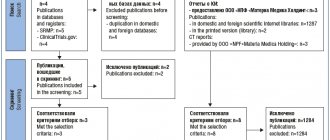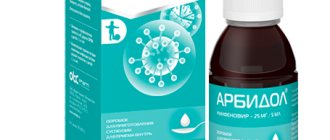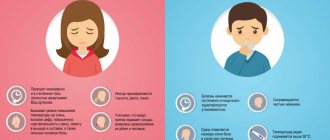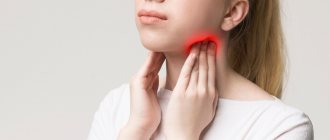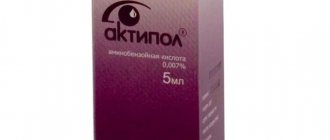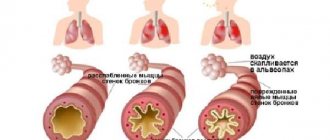Tonsilgon belongs to the group of herbal preparations with complex effects. The medicine is produced in the form of drops. It is a clear, yellow-brown liquid with a chamomile aroma. A small amount of sediment may appear during storage of the product. The drug is packaged in 50 mg and 100 mg bottles, equipped with a convenient drip dosing device.
Features of the composition of the drug
The drug can be purchased for the prevention and treatment of acute respiratory viral infections in children and adults. The product reduces pain and soreness in the scalp, which improves your well-being. In addition, the product improves immunity, which speeds up the healing process.
The composition of the drug is represented exclusively by herbal components. This:
- Marshmallow roots. They have an enveloping, softening, expectorant and anti-inflammatory effect. The plant covers the mucous membranes with a thin layer and remains on their surfaces for a long time, which allows to stop inflammation and accelerate tissue regeneration
- Chamomile flowers. They are distinguished by anti-inflammatory, disinfectant, and analgesic properties. The antibacterial effect of the medicinal plant is important in the composition of the drug.
- Horsetail grass. A characteristic feature of the component is its targeted anti-inflammatory effect in diseases of the oral cavity. In addition, the medicinal plant relieves swelling and restores breathing.
- Walnut leaves. And they normalize immunity, reduce the severity of cold symptoms, lower body temperature and increase the effectiveness of treatment of ARVI. In addition, the component has a mild analgesic effect.
- Yarrow herb. It contains a large amount of vitamin C and P. Combinations of various biologically active substances provide bactericidal, healing and anti-inflammatory effects.
- Oak bark. The tannins contained in the component have a protective effect against external irritants. This allows for faster tissue healing.
- Dandelion grass. This medicinal plant has a rich vitamin and mineral composition. When used, it is possible to enhance the body's natural defense reactions.
Tonsilgon drops, which are affordable, are distinguished by their ability to suppress the activity of harmful bacteria and viruses. When used, it is possible to stop inflammation.
They have an immunomodulatory effect. The combination of biologically active substances of plant origin reduces allergy symptoms, weakens cough, reduces swelling of the mucous membranes and makes breathing easier. In addition, the medicine has an antioxidant effect.
The pharyngeal tonsil, like other formations of the lymphopharyngeal ring, is one of the structurally formed accumulations of the so-called “mucosa associated lymphoid tissue (MALT)” and takes part in the mechanisms of immune defense. Together with nonspecific protective factors (mucociliary transport, production of lysozyme, interferon, etc.), it performs a barrier function, regulates the production of secretory immunoglobulin A and, as a result of lymphocytopoiesis, supplies lymphocytes to the mucous membranes of the upper respiratory tract (1).
Chronic inflammation of the pharyngeal tonsil (chronic adenoiditis - CA) is a multifactorial immunopathological process, the trigger of which is a viral infection (often with activation of bacterial agents persistent in the nasopharynx), developing against the background of predisposing factors, such as hereditary predisposition, crowding in children's groups, secondary immunodeficiencies states [2-4].
The prevalence of chronic adenoiditis, according to data from referrals and preventive examinations, ranges from 5.2 to 33.9 per 1000 people [5, 6], and hypertrophy of the pharyngeal tonsil has a maximum prevalence in the age group of 3-7 years [7-9] and is detected in 37 -76% of children [5, 10-12]. According to the results of preventive examinations of children in Novokuznetsk, 18.0±0.9% of children under the age of 3 years and 9.2±0.5% of children aged 3-7 years are sick with CA [13]. CA in 65.4% of cases is accompanied by diseases of the paranasal sinuses and in 76% by exudative otitis media.
To increase the effectiveness of treatment for CA, taking into account all the features of its pathogenesis, standard treatment protocols use herbal preparations that have anti-inflammatory and immunomodulatory properties.
Tonsilgon N (Bionorica, Germany) is a classic herbal medicine for the treatment and prevention of inflammatory diseases of the lymphoid apparatus of the pharynx, especially in frequently ill children. It has anti-inflammatory, antiseptic, immunomodulatory, antibacterial and enveloping effects. This variety of properties is due to the plant components included in the preparation: marshmallow root, chamomile flowers, horsetail herb, walnut leaves, yarrow herb, oak bark, dandelion herb. The active components included in chamomile, marshmallow and horsetail help to increase the body's nonspecific defense factors by increasing the phagocytic activity of macrophages and granulocytes. Polysaccharides, essential oils and flavonoids of chamomile, marshmallow, yarrow and oak tannins have an anti-inflammatory effect and reduce swelling of the mucous membrane of the respiratory tract. Oak and walnut tannins have an astringent effect and have antiviral activity.
The drug is available in the form of pills and drops, is well tolerated, can be combined with antibiotics and can be prescribed to children over 1 year of age. There are separate immunological studies indicating that after taking it, some indicators of systemic immunity significantly improve in people with acute respiratory infections and chronic diseases of the pharynx. In the studies of O.F. Melnikova and O.G. Rylskaya studied the effect of the drug on cellular and humoral immunogenesis [14-15]. The purpose of the study was to evaluate the effect of the drug on the manifestations of the phenotypic and functional characteristics of the palatine tonsils of patients with chronic tonsillitis in vitro.
The material for the research was cells from the palatine tonsils of patients with chronic tonsillitis.
The effect of the drug on the relative content of cells with the CD4, CD25 and CD56 phenotype in cell culture of the palatine tonsils of patients with chronic tonsillitis has been proven [14]. in vitro
studies indicate the presence of immunostimulating properties in this herbal preparation, which are manifested both in relation to factors of innate (natural cytotoxic activity and phagocytosis) and acquired (stimulation of antibody genesis) immunity [15].
The purpose of the study was to evaluate the effectiveness of the use of the drug tonsilgon N in the complex treatment of children with exacerbation of chronic adenoiditis.
Patients and methods
The clinical open prospective controlled study involved 62 children (32 in the main group and 30 in the control group) aged from 3 to 11 years, admitted for treatment at the ENT department of the Regional Perinatal Center for day hospital treatment with a diagnosis of exacerbation chronic adenoiditis."
Inclusion criteria: verified diagnosis of chronic adenoiditis, age from 3 to 11 years.
Exclusion criteria: age younger than 3 and older than 11 years, taking other mucoactive or immunocorrective drugs.
The parents of all children gave written informed consent to the study. The distribution of children by age is presented in table. 1.
The examination included: medical history, general examination, thermometry, rhino-, pharyngo- and otoscopy, if necessary, X-ray examination of the paranasal sinuses in direct and lateral projection, general clinical examination.
The complex of therapeutic measures included:
- systemic antibacterial therapy using β-lactam antibiotics (amoxicillin
50 mg/kg/day, course 5-7 days);
- rinsing the nasopharynx using the Proetz method, followed by the use of antiseptics or topical antibiotics;
— decongestants for a short course;
— physical therapy (microwaves, laser No. 7).
Patients of the main group additionally received the drug Tonzilgon-N: preschool children 10 drops 3 times a day, schoolchildren 15 drops 3 times a day for 14 days.
The assessment of clinical manifestations was carried out by a doctor on the 3rd, 5th, 7th and 9th days of treatment according to the scoring system we proposed (from 1 to 5 points) for the following symptoms.
1. Difficulty in nasal breathing during the day: 0 - normal breathing, 1 - slight intermittent difficulty, 2 - slight constant difficulty, 3 - severe difficulty less than 4 hours a day, 4 - severe difficulty more than 4 hours a day, 5 - absence of nasal breathing.
2. Intensity and nature of rhinorrhea: 0 - no discharge, 1 - a small amount of mucous discharge, 2 - moderate mucous discharge, 3 - abundant mucous discharge, 4 - purulent mucous discharge, 5 - abundant purulent discharge.
3. The degree of difficulty in nasal breathing at night: 0 - normal breathing at night, 1 - slight occasional snoring, 2 - slight constant difficulty, 3 - snoring, 4 - severe difficulty, snoring, 5 - lack of breathing at night.
Statistical analysis of the obtained data was carried out using parametric and nonparametric statistics methods using the Statistica v software package. 6.0, SPSS 11.0, INSTAT 2.0. The normality of distribution of quantitative characteristics was checked using histograms, the Kolmogorov-Smirnov test with the Lilliefors correction and the Shapiro-Wilk test, and the homogeneity (homogeneity) of variance was checked using Levene’s test. To test statistical hypotheses about differences in absolute and relative frequencies and ratios in two independent samples, the &khgr;2 test with Yates' correction and Fisher's exact test were used. For quantitative traits, intergroup differences were assessed using the Kruskal-Wallis test. Paired intergroup comparisons of indicators were made using the Mann-Whitney U test. The relative significance level (p) was calculated, with the critical significance level taken equal to 0.05.
Results and discussion
Assessment of the degree of difficulty in nasal breathing during the day (Fig. 1)
Figure 1. The degree of difficulty in nasal breathing during the day in the main and control groups during treatment. in both groups made it possible to establish that, with initially the same level of congestion, nasal breathing in the main group of children on the 5th day of treatment was 15% better than in the control group, on the 7th day - by 30%, and on the 9th day - by 73%.
The nature and dynamics of intensity of rhinorrhea also had their own characteristics (Table 2).
In the main group of children, upon admission to the department, 2 (6.25±2.47%) children had a purulent runny nose, 10 (31.25±5.3%) had a mucopurulent runny nose, 4 (12) each had heavy and moderate mucous discharge. .5±3.46%) children, a small amount of mucous discharge - 3 (9.38±3.02%) and no discharge in 9 (28.15±5.06%) children. In the control group, the percentage did not differ significantly and was 3.33±1.82, 33.33±5.48, 13.33±3.58, 10±3.11, 10±3.11 and 30±, respectively. 5.22%. On the 3rd day of treatment, the intensity of discharge decreased in children of both groups, although there were no significant differences. However, on the 5th day of treatment, there was no discharge in 15 (48.85%) children of the main group and in 10 (35.07%) of the control group (p = 0.04). On the 7th day, the percentage increased to 62.5% in the main group and to 53.33% in the control group (p=0.04). On the 9th day, 29 (90.63%) children receiving the herbal preparation had no discharge, while among children receiving standard therapy, this figure was only 25 (76.67%) (p = 0. 01). Abundant purulent and purulent-mucosal discharge ceased in both groups on the 5th day of treatment. At the same time, on the 5th day, moderate mucous discharge was diagnosed in 5 (15.63%) children of the main group and 7 (23.33%) of the control group, and on the 7th day these groups amounted to 4 (12.5%) and 5 (16.67%) children, respectively. Even on the 9th day of treatment, 10% of children in the control group still had moderate mucous discharge.
A small amount of mucous discharge was observed in 10-20% of children in the main group and in 16-26% of children in the control group on days 5-7 of treatment. On the 9th day, a small amount of discharge remained in 3 (9.3%) children of the main and 4 (13.3%) control groups (p = 0.05).
Thus, the intensity of rhinorrhea in the main group receiving the herbal preparation was relieved faster than in the control group.
Improvement in nasal breathing at night began already on the 5th day of treatment (Fig. 2).
Figure 2. The degree of difficulty in nasal breathing at night. However, the statistical significance of these differences appeared only on the 7th day, when the assessment of night breathing in the main group was 2.12 points, and in the control group - 2.8 points. On the 9th day of treatment, breathing at night in children of the main group was 1.4 times better than in children in the control group.
Conclusion
Treatment of children with CA was more successful in the group receiving tonsilgon N: the severity of rhinorrhea was relieved faster, nasal breathing became 73% better both at night and during the day. Thus, the study made it possible to establish that the inclusion of the drug Tonsilgon N in the treatment regimen for CA increases the effectiveness of therapy and accelerates the recovery process.
Indications and contraindications
Tonsilgon drops, the instructions for use focus on this, are prescribed for the treatment of children and adults. It increases the effectiveness of acute and chronic ARVI therapy.
In addition, the medicine can be used as a prophylactic agent to reduce the risk of complications of diseases caused by viruses. The drug increases the effectiveness of antibacterial therapy for various diseases caused by pathogenic bacteria. It increases the body's resistance to infectious pathologies.
Tonsilgon has serious contraindications, so its use should be agreed with a doctor if indicated. It is prohibited to use the medicine if you are hypersensitive to any component in the composition. The drug is not prescribed for the treatment of children under one year of age.
Treatment with Tonsilgon drops is carried out with caution when liver dysfunction is confirmed in patients, as well as in cases of traumatic brain injury. The drug is not recommended for the treatment of people with alcohol dependence or after undergoing treatment aimed at getting rid of addiction.
Use and adverse reactions
Tonsilgon drops are taken orally. There is no need to dilute them with water. The product should be kept in the mouth before swallowing. When the disease is acute, the recommended dosage for adults is 25 drops. The product should be taken 5-6 times a day.
For children of school and preschool age in the acute phase of the disease, 15 drops and 10 drops are recommended 5-6 times per day, respectively. After the pronounced symptoms of the disease have been relieved, children and adults should continue taking drops in the same dosage 3 times a day.
If contraindications are excluded, adverse negative reactions of the body while taking the drug rarely occur. The most common problems are in the gastrointestinal tract. They are manifested by nausea and vomiting.
Overdose of the drug has not been recorded in practice. But most likely it can increase negative side reactions to the drug. In such cases, symptomatic treatment is indicated.
Dosages from the instructions for Tonsilgon
The instructions for use of the drug contain the following recommendations for use:
- adults – 2 tablets or 25 drops up to 6 times a day;
- up to the first year of life – 5 drops, procedures are carried out with a break of 4 hours;
- 1-6 years – 10 drops every four hours;
- 6-12 years – 1 tablet or 15 drops up to 6 procedures per day.
After completion of the acute phase of the disease, the frequency of taking the drug is reduced, the dosage remains at the same positions. The maximum number of procedures does not exceed 3 per day, maintenance therapy is carried out no more than one week.
The drops are used in their original form and are not diluted with water. Before swallowing, the solution is kept in the mouth for some time. Dragees cannot be crushed or chewed; they are consumed whole, washed down with a sufficient volume of liquid.
Special Recommendations
If there is no improvement in the patient's condition when using Tonsilgon drops for 7 days, you should urgently consult a doctor. If any allergic reactions occur, treatment with the drug should be discontinued.
The appearance of sediment and slight turbidity of the liquid in the bottle during storage does not reduce the effectiveness of the drug. The solution should be shaken before use. Since Tonsilgon drops contain ethyl alcohol, you should avoid driving vehicles during treatment with the drug.
You can buy the medicine in pharmacies without a prescription. But it should only be taken if recommended by a doctor. The shelf life of the medicine is 2 years at a temperature not exceeding 25°C. It is important to store the spray in a dry place out of the reach of children.
